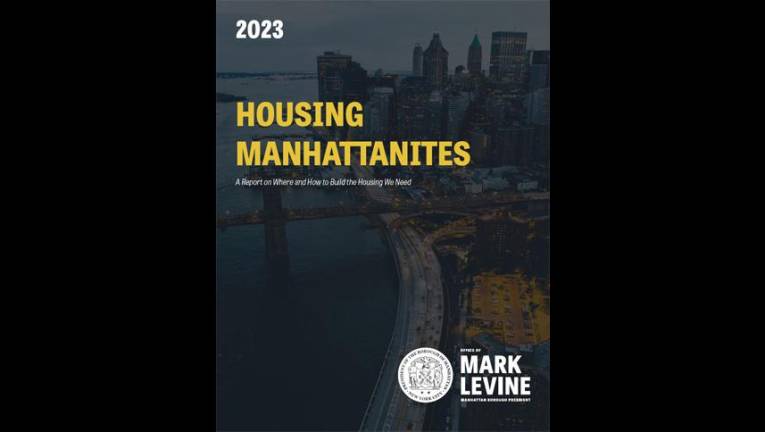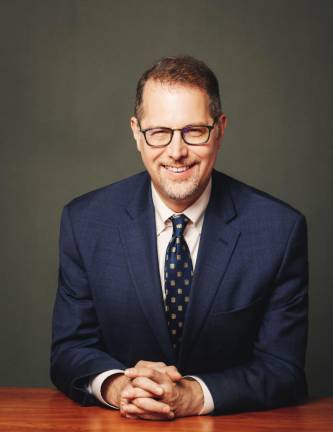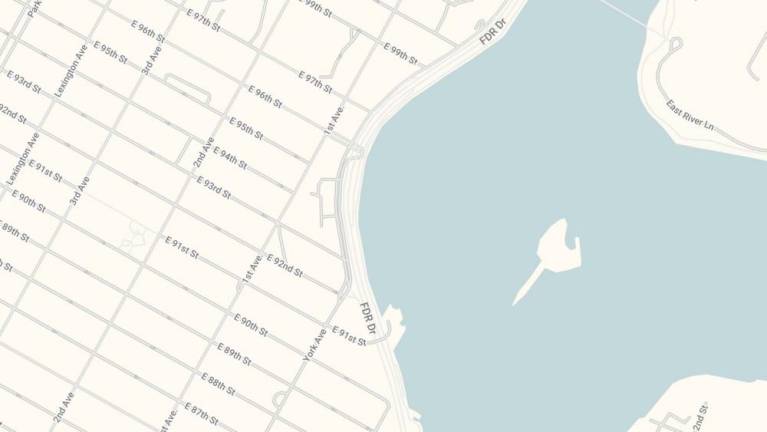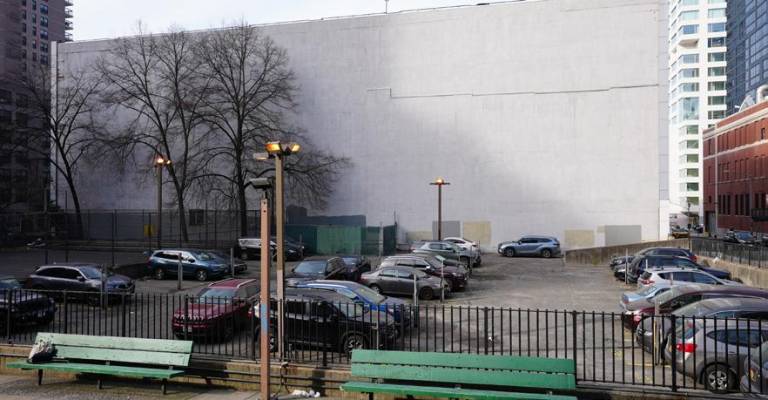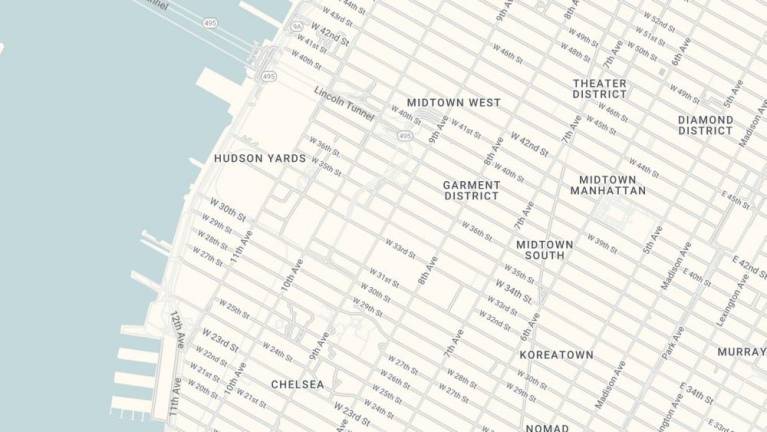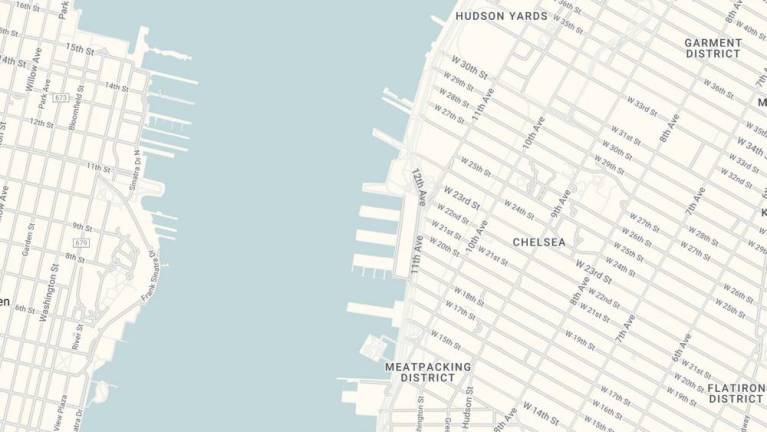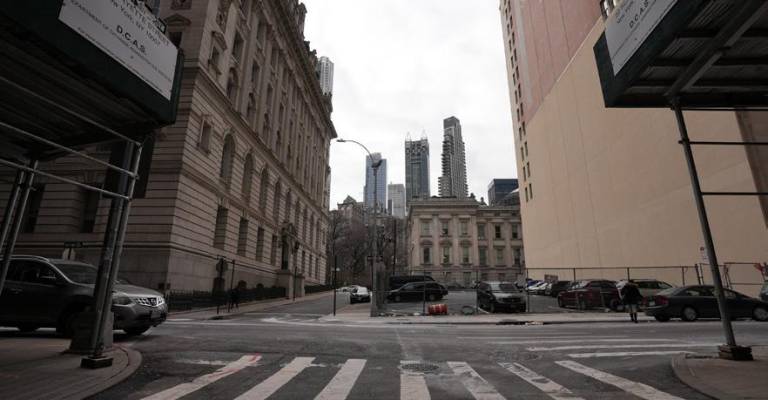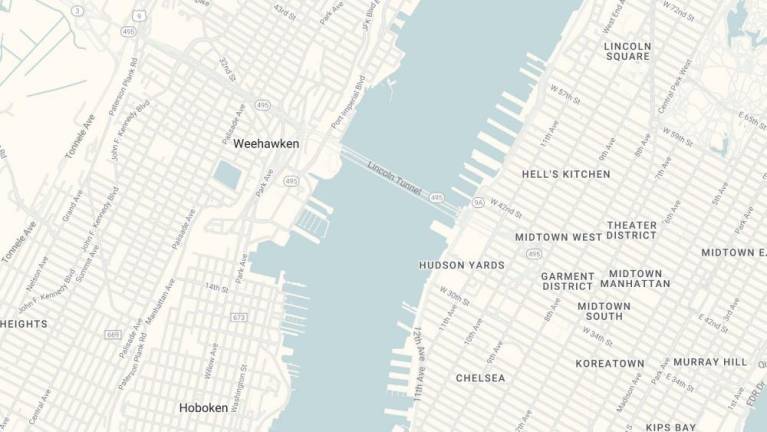Boro Pres Unveils Sweeping Housing Plan, Seeks to Add 70,000 New Units
Borough president Mark Levine says local outcry cannot be reason to torpedo new housing plans as he calls for a comprehensive borough wide approach to new housing that could add 70,000 units by tapping over 170 buildable lots and overhauling zoning rules.
Manhattan borough president Mark Levine unveiled a plan to create thousands of new apartments in Manhattan, declaring that the present shortage has become so acute it is no longer acceptable for local residents “to say that you just don’t want to build any more housing.”
Levine, saying he wanted to lay to rest the claim there was no where left to build in Manhattan, identified 171 specific lots where new apartments could rise as well as nine neighborhoods where zoning changes would encourage more housing construction.
“Market-rate apartments in Manhattan are now renting, on average, at an astonishing $5,100 per month,” Levine said. “It’s not only low-income families who are getting priced out of our borough, but nurses, bus drivers, and teachers as well. Young people who’ve grown up in Manhattan increasingly feel that finding an apartment of their own here one day will be an impossible dream.”
All told, Levine estimated the plan could create locations for some 73,600 new apartments, an 8% increase from the boroughs current 914,000 housing units.
“Obviously that wouldn’t happen overnight,” Levine said. “Our competitive cities are adding ten percent to their housing stock every five years. We are no where near that. Tokyo for example is adding 2% a year.”
He noted that 11,000 units were added in Brooklyn last year, compared to just 3,500 in Manhattan.
“There are unique challenges that are leaving is without enough housing being built in the borough,” Levine said.
A key challenge has been the strong resistance by local neighborhoods to some projects.
“Because we’ve done this on one off fights, when a developer or city agency came with a proposal, they tend to descend into often very ugly, parochial conflicts,” said Levine. “We wanted to rise above that by stepping back and saying we are not going to just react to proposals from developers. We’re going to devise a plan for what we want done on housing. Where we can build. We want to think very deliberately about how we can get the affordable units that we need.”
The 171 potential sites for new housing were identified by Levine’s land use staff and are located all over the borough, about three quarters of them south of 96th street. They are identified in a 77-page report from Levine’s office called “Housing Manhattanites.”
“We really want to elevate this above what often become very nasty, one-off fights, to say ‘we need a plan as a borough’,” Levine explained. “If folks come back and they really object to one of the sites in our plan then my response is, ‘No problem, just find me equivalent amount of housing on another site.’ But to say that you just don’t want to build any more housing. That can’t be an acceptable outcome anymore.”
About half these sites are already publicly owned, everything from a vacant federal building on Park Row to parking lots all over the boroughed owned by the city Housing Authority, the NYPD and others. Levine’s report notes that in some cases the current use for the government owned property will have to either be moved or accommodated in the new development on that site.
The other half of the sites identified by Levine’s staff are privately owned. They range from small lots to the massive site on first avenue and fortieth street where the Soloviev Group wants to build apartments, a museum and a casino.
Levine said he would expedite his office’s land use review for any proposals offered for the 171 sites. Those sites, Levine’s staff estimated, could accommodate about 46,700 new apartment units. Levine said nearly half would be so called affordable housing, which are either directly subsidized or developers agree to charge less than market rent for these apartments as part of winning permission to build their entire project.
Another 27,900 units, about 27% affordable, could be generated by zoning changes that would expand residential construction opportunities in nine neighborhoods, Levine said. Those neighborhoods are West Chelsea, Hudson River Park, Midtown, Hudson Yards, Clinton, the East 90s, Morningside Heights and Southern Washington Heights.
Levine’s Housing plan was a central element of his first State of the Borough Message, which he was delivering Tuesday evening at Shepard Hall at City College. He noted that a response to the housing crisis also called for a ramped up effort to protect tenants from rent gouging and eviction.
This should include, he said, greater support for legal aid to tenants fighting eviction. Legislation passed in 2017 gives tenants the right to representation, but the rise in evictions has overwhelmed the availability of consul.
“The Right to Counsel law has been a game changer for New York City tenants, dramatically lowering the number of evictions pre-pandemic,” Levine said. “But now the law is being undermined, as the number of eviction cases has overwhelmed the capacity of legal service providers.”
He said that families had lost their homes because they did not receive the counsel the law requires. “This is unacceptable,” he said. “And the solution to this is obvious: We are demanding that no eviction case move forward in New York City if the tenant does not have access to an attorney.”
Levine highlighted what he described as the dire consequences of rising housing costs. “Soaring rents are one of the main drivers of the tragic increase in homelessness, which has now forced over 60,000 of our fellow New Yorkers into the shelter system.
“How did this happen? How did Manhattan, home for generations to people at every rung of the economic ladder, become a place where only the wealthy can afford to rent an apartment?
“To say that you just don’t want to build any more housing, that can’t be an acceptable outcome anymore.” Manhattan Borough President Mark Levine
